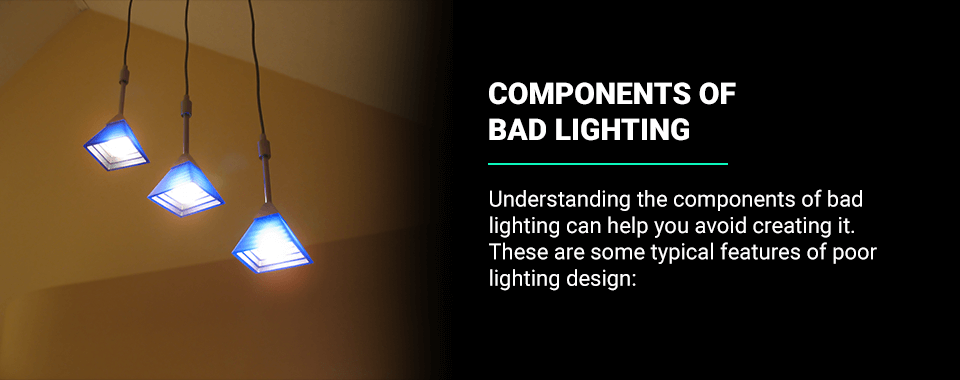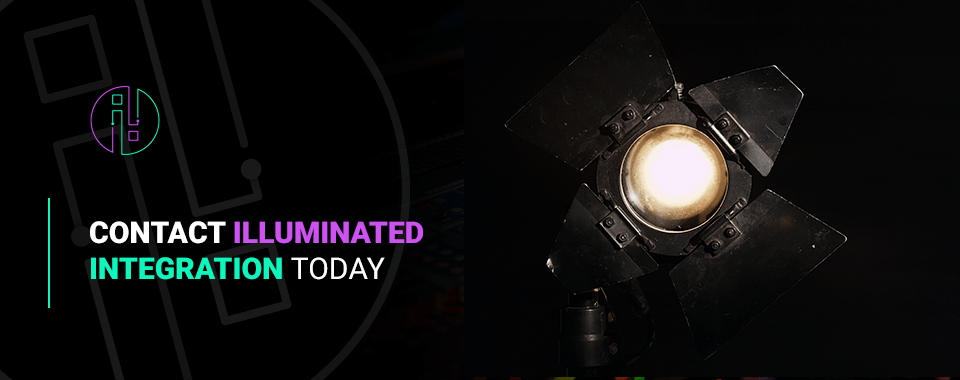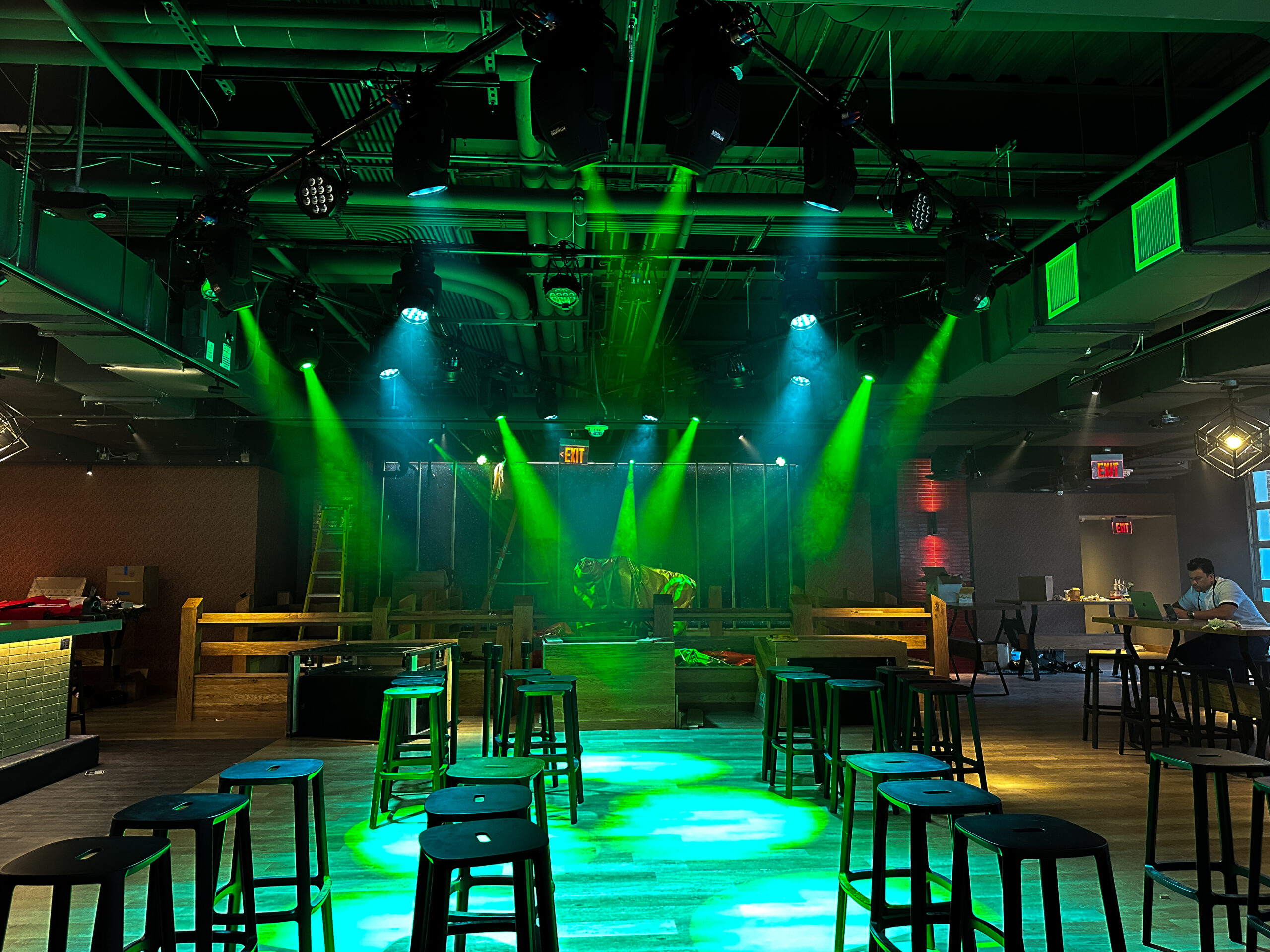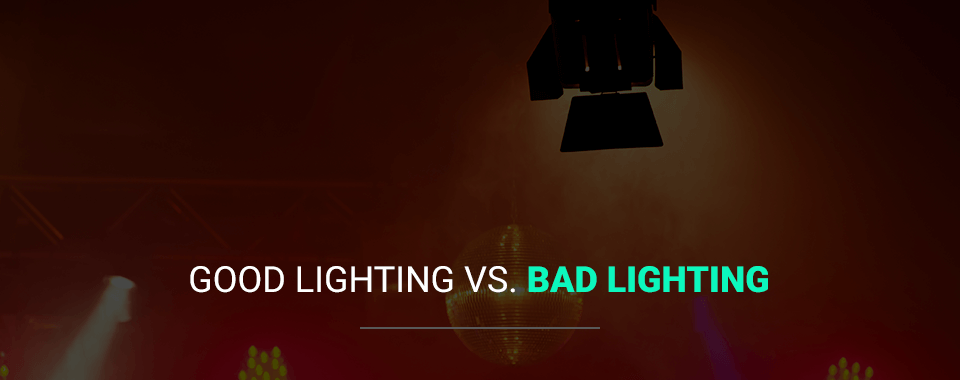Lighting is an essential feature in any room. Whether you’re in a theater, a restaurant, a conference room or anything in between, the lighting quality impacts visitors’ moods and thoughts. The difference in good lighting vs. bad lighting can be seen in an individual’s mood, as their mood can either be boosted and positively affected or negatively affected.
When creating a lighting design, it’s important to prioritize good lighting. Good lighting illuminates the space properly and adds a sense of comfort. Bad lighting can make a room dim and shadowy. The better your lighting, the more likely guests will enjoy their experiences.
Read on to learn more tips for good lighting as well as the key differences between good and bad lighting.
Factors That Affect Quality of Light
A variety of factors impact a room’s visual comfort and determine whether the light strengthens or weakens the space. Here are some examples:
- Illumination intensity: First, the source illumination’s strength impacts light quality. A room’s lighting can originate from multiple sources. For instance, it could rely on natural light from a window or a lamp’s glow. Many people use a combination of sources to establish sufficient light in all parts of the room. Your lighting can have varying depths depending on the type and environment. The depth impacts the space’s visual appearance. For example, you might use a few windows as a light source. On a sunny afternoon, the sun would fill the room with strong rays. But on a cloudy day, the light source would become weaker.
- Illumination distribution: Distribution also affects lighting conditions. Your light could spread out evenly across all room areas, or it could only land in one area. In some cases, light concentration is beneficial. For instance, theaters often illuminate only one portion of the stage at a time. However, even light distribution is typically better for other spaces.
- Shadow formation: When a solid object obstructs a light source, a shadow forms. Shadows can also develop due to hard light, which is a bright and harsh light beam. Designers and photographers use hard light to create a clear contrast between shadow and light. Shadows occur naturally in many spaces, but they can impact the overall light quality of a room. For example, excessive shadows might make the room appear darker.
- Light glare or reflection: Light glares and reflections can also affect a room’s visual appearance. As light pours into a room, it can reflect off other surfaces and create glares. Particularly intense light sources can also cause glares. These lights are harsher and typically uncomfortable for the eyes to process. They can lower your lighting quality and make it challenging for visitors to complete or process tasks. Glares can even become hazardous when they reduce visibility. For example, a glaring porch light might disrupt someone’s vision and make them trip.
- Color quality: The light’s color also affects its quality. Color describes how warm or cool the light appears within a room. You typically measure a light’s color in temperature — lower temperatures mean warmer colors, while higher temperatures indicate cooler colors. Warm shades can make lighting seem cozier. Cooler colors seem sharper or more intense.
Components of Good vs. Bad Lighting
Components of Good Lighting
Strong lighting establishes a comfortable and engaging environment. By recognizing common traits of good lighting, you can implement them into your design. Here are a few components of good lighting:
- Even distribution: Good lighting is uniformly distributed across a room. The light is bright enough to see the entire room clearly, but not uncomfortably harsh. It falls evenly on horizontal and vertical surfaces, creating a clear and inviting atmosphere. A good light uses soft light to naturally diffuse light throughout the room.
- Efficient design: Another feature of good lighting is efficiency. Lights are positioned strategically to illuminate surfaces and eliminate the need for excess light fixtures, which can save energy. Strong lighting designs might also use energy-efficient sources, such as LED lights. Ideal spaces also have controls that allow you to brighten or dim the room when needed. These controls can conserve energy use.
- No flickers: Next, all lights function properly and don’t blink or flicker while in use. They cast a clear and bright light across the room. Guests or employees can work or enjoy the space without distracting flickers.
- Bright ceilings and walls: A room’s ceilings and walls can also affect lighting. Bright ceilings and walls create an open and calm atmosphere and make a great “canvas” for lighting design. All corners of the room should have sufficient illumination and not too many shadows, which can make the entire space feel welcoming and breathable.
Overall, good lighting helps users feel energized and welcome. It uplifts the room rather than causes distractions or discomfort.
Components of Bad Lighting
Understanding the components of bad lighting can help you avoid creating it. These are some typical features of poor lighting design:

- Excessive shadows: Bad lighting is full of shadows. These dark spots are common when you place light in the wrong place or at the wrong angle. For example, hanging a light directly overhead could throw your face into shadow. Too many dark areas can degrade the light quality of the room, making it difficult to see specific features.
- Uneven distribution: Next, another component of bad lighting is unfavorable distribution. Instead of spreading uniformly across a space, poor lighting might accumulate in specific areas. Uneven distribution can cause a room to look unbalanced. Or, it could emphasize a certain area unintentionally, making it more challenging to stay alert or focus on other people.
- Dim atmosphere: Poor lighting can also create an overall dim atmosphere. The light source of a bad light might be weak or not bright enough, casting the room into near darkness. These conditions make it more difficult to complete tasks, causing feelings of drowsiness instead. For example, a classroom with dim lighting might make students feel tired and distracted from their studies.
- No focus on important features: Bad lighting might also neglect places of interest, causing spaces to feel boring or uninspired. For instance, you might want to naturally illuminate a vase or painting in a gathering area. A poor lighting design would place those in a dim area or throw them into shadow.
Contact Illuminated Integration Today

Lighting has a direct impact on people’s moods and activity levels. Establishing good lighting in your space can help create an uplifting and exciting environment.
If you’re interested in transforming your lighting, choose Illuminated Integration. We offer high-quality lighting services for a wide range of commercial applications. From theaters to churches and anything in between, our expert team can help you find the lighting solution that enhances your space.
After meeting with your team for an in-depth consultation, we create an original 3D lighting design for your property. Then, our expert technicians install your new lighting system, answering every question along the way. We can help you achieve good lighting that accentuates and enlightens your desired room.
To get started with Illuminated Integration, contact us today.


